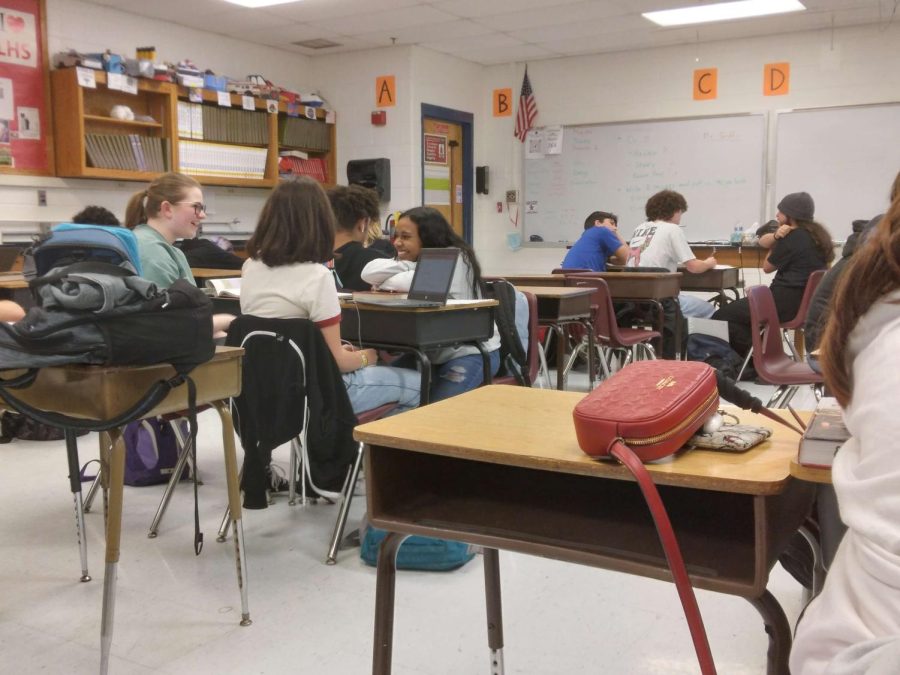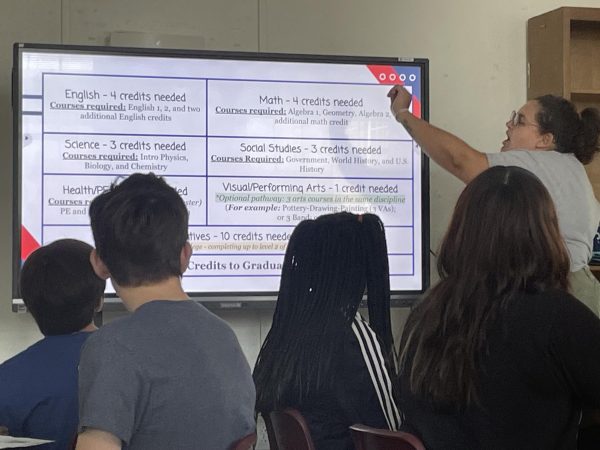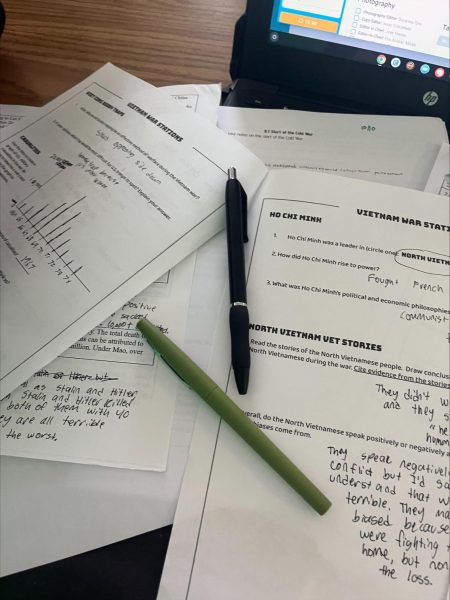Should we Have Assigned Seats in Classrooms?
Lexington, KY: A Lafayette science classroom full of juniors and seniors working together on an assignment.
When students walk into a teacher’s classroom, one of the first things they want to know is where they should sit. Many teachers choose to take away the mystery by creating classroom seating arrangements, which ends up sparking a heated debate.
First and foremost, classroom seating arrangements can be very beneficial at the beginning of a school year. With these seating arrangements, it is very easy for the teachers to quickly learn their students’ names. With a seating chart, you’ll know who is sitting where and be able to recognize faces in the classroom faster.
Also, If your seating chart is arranged alphabetically, turning in papers for grading is a cinch. When all papers are in alphabetical order already, teachers can easily enter them into their computer faster.
Also, when having a seating chart, it may be able to prevent classroom disturbances and issues between students, such as students who talk during instruction frequently and disturb the rest of the class. Or, for students who struggle to see or pay attention, you can move them up towards the front to keep more of an eye on them and help them when need be. And finally, by choosing where students sit, you can help them potentially meet new people and watch new friendships blossom.
There are a few cons to assigned seating, such as the risk of sitting people who dislike one another together heavily. This had happened to me earlier in the year when someone I was made to sit by was someone I had previously dated and left on bad terms with, but his name came right after mine alphabetically.
Another disadvantage with seating charts is that students with poor vision or hearing difficulties may only be able to participate in class if they can choose their seating; and this is not always an option. Also, an assigned seating may be disadvantageous to introverted students. When choosing their seats, they may sit by friends, encouraging them to participate more in class discussions.
The Lafayette Times interviewed Lafayette Sophomore Alyx Rose about which form of seating they preferred.
The Times: Do you prefer assigned seating or the ability to choose your seats, and why?
Alyx: I like assigned seating because no one can take my seat. I enjoy being in the same seats all year and feel as if changing seats tends to cause my work to falter.
The Times: Do you have any classes that let you choose your seats? And if so, would you say it’s led to you being more vocal in class discussions?
Alyx: In theatre, we are allowed to choose our seats, and we’re free to sit anywhere we’d like the entire year. I would say it has led to me being more vocal, though, and I enjoy participating in class discussions alongside my friends at the table. Despite this, I prefer assigned seating, especially for my work-heavy math and English classes. I don’t think I could focus if I could sit where I want to in every class.
Assigned seats should be present in classrooms, with a few minor tweaks. If students have issues with their sight or hearing, they should be allowed to choose their seats to participate to the best of their abilities. And if in a class you’re sitting beside someone you’re uncomfortable with, you should have the option to move somewhere else in the room, which, luckily, most teachers will let you do if you explain your situation.
While it can be hard for some people to sit away from their best friends or people they may know, ultimately, just as the student interviewed stated, it could be the best for your grades and work ethic. But, regardless of whether teachers decide to let students choose their seats or not, they should have rules in place ( and hold them to high expectations) that allow the students to be able to put their best foot forward in class.

Emma Hacker is a junior at Lafayette High School; she loves to draw and write and has since she could hold a pencil. She has been taking drawing classes...











